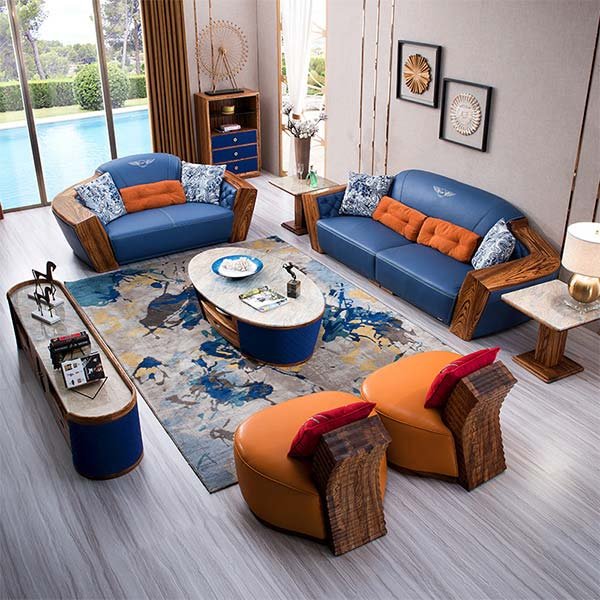“Protect your furniture, embrace your cat’s claws.”
Training techniques to redirect a cat’s scratching behavior
Training techniques to redirect a cat’s scratching behavior
Cats are known for their natural instinct to scratch, which can often lead to damage to furniture and other household items. However, with the right training techniques, it is possible to redirect a cat’s scratching behavior and protect your furniture. In this article, we will explore some effective methods to stop a cat from scratching furniture.
One of the most effective training techniques is to provide your cat with an alternative scratching surface. This can be in the form of a scratching post or a scratching pad. Place the alternative scratching surface near the furniture that your cat tends to scratch. By doing so, you are providing your cat with a designated area where it is allowed to scratch.
When introducing the alternative scratching surface, it is important to make it appealing to your cat. You can do this by rubbing some catnip on the surface or using a toy to attract your cat’s attention. Additionally, you can try using a scratching post or pad that has a texture similar to the furniture your cat likes to scratch. This will make the transition easier for your cat.
Another effective technique is to discourage your cat from scratching furniture by making it unpleasant for them. You can do this by using double-sided tape or aluminum foil on the furniture. Cats generally dislike the sticky texture of tape and the sound and feel of foil. By placing these deterrents on the furniture, your cat will be less likely to scratch it.
It is important to note that punishment should never be used as a training technique. Yelling at or physically punishing your cat will only create fear and anxiety, which can lead to more destructive behavior. Instead, focus on positive reinforcement. Whenever you see your cat using the alternative scratching surface, reward them with treats or praise. This will reinforce the idea that scratching the designated area is a positive behavior.
Consistency is key when training a cat to stop scratching furniture. Make sure to redirect your cat to the alternative scratching surface every time you catch them scratching the furniture. It may take some time for your cat to fully understand and adopt the new behavior, so be patient and persistent.
If your cat continues to scratch furniture despite your efforts, you may want to consider using a deterrent spray. These sprays are designed to have an unpleasant smell or taste that cats dislike. By spraying the deterrent on the furniture, you can discourage your cat from scratching it.
In conclusion, training a cat to stop scratching furniture requires patience, consistency, and the use of effective techniques. Providing an alternative scratching surface, making the furniture unpleasant, using positive reinforcement, and considering deterrent sprays are all methods that can help redirect a cat’s scratching behavior. Remember to be patient and persistent, and soon your cat will learn to scratch in the appropriate areas, saving your furniture from damage.
Choosing and using appropriate scratching posts or boards
Choosing and using appropriate scratching posts or boards is essential in preventing your cat from scratching your furniture. Cats have a natural instinct to scratch, and providing them with suitable alternatives can help redirect their behavior. In this article, we will discuss the importance of selecting the right scratching posts or boards and how to encourage your cat to use them.
When choosing a scratching post or board, it is important to consider your cat’s preferences. Some cats prefer vertical scratching posts, while others prefer horizontal boards. Observe your cat’s scratching behavior to determine which type they prefer. Additionally, consider the material of the scratching post or board. Sisal, cardboard, and carpet are popular choices that provide a satisfying texture for cats to scratch.
Size is another important factor to consider. The scratching post or board should be tall enough for your cat to fully stretch their body while scratching. This allows them to engage their muscles and get a good stretch. A sturdy base is also crucial to prevent the post or board from tipping over while your cat is using it.
Once you have chosen the appropriate scratching post or board, it is important to place it in a strategic location. Cats often scratch to mark their territory, so placing the post or board near the furniture they usually scratch can help redirect their behavior. Additionally, placing the post or board in a prominent and accessible area of your home will encourage your cat to use it.
To further entice your cat to use the scratching post or board, you can use positive reinforcement. Whenever you see your cat using the post or board, reward them with praise, treats, or playtime. This will create a positive association with the scratching post or board and encourage them to continue using it.
If your cat continues to scratch your furniture despite having a suitable alternative, you can try using deterrents. There are various products available, such as sprays or tapes, that have an unpleasant scent or texture for cats. Applying these deterrents to the furniture can discourage your cat from scratching it.
It is important to note that punishment should never be used to stop your cat from scratching furniture. Punishment can create fear and anxiety in your cat, which can lead to other behavioral issues. Instead, focus on providing positive reinforcement and redirecting their behavior to the appropriate scratching post or board.
In conclusion, choosing and using appropriate scratching posts or boards is crucial in preventing your cat from scratching furniture. Consider your cat’s preferences, select the right material and size, and place the post or board strategically. Use positive reinforcement to encourage your cat to use the scratching post or board and consider using deterrents if necessary. Remember to never punish your cat for scratching furniture, as it can have negative consequences. With patience and consistency, you can successfully redirect your cat’s scratching behavior and protect your furniture.
Applying deterrents or protective coverings to furniture
Applying deterrents or protective coverings to furniture is an effective way to prevent your cat from scratching it. Cats have a natural instinct to scratch, which helps them keep their claws healthy and mark their territory. However, this behavior can be destructive when it comes to your furniture. In this article, we will discuss some methods to stop your cat from scratching your furniture.
One of the most common deterrents is using double-sided tape. Cats dislike the sticky feeling on their paws, so placing double-sided tape on the areas your cat likes to scratch can discourage them from doing so. Make sure to choose a tape that is safe for your furniture and won’t damage it. Additionally, you can use aluminum foil or plastic wrap as an alternative to tape. The crinkly sound and texture will deter your cat from scratching.
Another effective method is using a cat repellent spray. These sprays are specially formulated to have a scent that cats find unpleasant. Simply spray the repellent on the furniture you want to protect, and your cat will be deterred from scratching it. It’s important to choose a spray that is safe for both your cat and your furniture. Always read the instructions and test the spray on a small, inconspicuous area before applying it to the entire piece of furniture.
If you prefer a more natural approach, you can try using citrus or lavender essential oils. Cats dislike the strong smell of these oils, so applying a few drops to the areas your cat likes to scratch can be an effective deterrent. However, it’s important to note that some cats may not be bothered by these scents, so it may not work for every cat.
Protective coverings are another option to consider. There are various types of covers available, such as plastic or vinyl covers, that can be placed over your furniture to prevent scratching. These covers are usually transparent, so they won’t affect the appearance of your furniture. Additionally, you can use specially designed furniture protectors that are made of materials like sisal or cardboard. These protectors provide a scratching surface for your cat, redirecting their attention away from your furniture.
In addition to applying deterrents or protective coverings, it’s important to provide your cat with appropriate scratching alternatives. Cats need to scratch to keep their claws healthy, so it’s essential to provide them with a suitable outlet for this behavior. Invest in a sturdy scratching post or a cat tree that your cat can use instead of your furniture. Place the scratching post near the furniture your cat likes to scratch, as this will encourage them to use it instead.
In conclusion, applying deterrents or protective coverings to your furniture can help stop your cat from scratching it. Whether you choose to use double-sided tape, cat repellent spray, essential oils, or protective covers, it’s important to find a method that works for both you and your cat. Additionally, providing your cat with appropriate scratching alternatives will help redirect their behavior. With patience and consistency, you can protect your furniture and keep your cat happy.
Заключение
Заключение: Чтобы предотвратить кошку от царапания мебели, можно применить следующие методы:
1. Предоставьте кошке альтернативные места для царапания, такие как кошачий когтеточка или специальные игрушки.
2. Обрежьте когти кошки или используйте накладные наконечники, чтобы снизить повреждения от царапания.
3. Покройте мебель защитными покрывалами или накидками, чтобы предотвратить прямой доступ кошки к поверхностям.
4. Используйте ароматические отпугиватели или спреи, чтобы отвлечь кошку от мебели.
5. Поощряйте кошку игрой и физической активностью, чтобы уменьшить ее потребность в царапании.
6. При необходимости, проконсультируйтесь с ветеринаром о возможности использования специальных средств или процедур для предотвращения царапания мебели.



